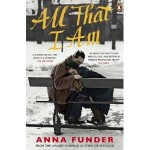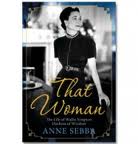Referencing Shanghai – Some Mentions of the Old Town that I Picked up on in 2011
Posted: December 24th, 2011 | No Comments »As it’s the holidays a somewhat longer post…
Despite the best attempts of modern Shanghai’s leaders to present the city as an aspirant International Financial Centre, regional logistics hub, mega-port and (said with straight faces at government press briefings) centre of ‘knowledge workers’, the older image of Shanghai as a raffish city, an edge city positioned between a notional western civilization and a perceived eastern barbarism, a teeming Oriental city, a criminal city persists. Pearl of the Orient can never quite nudge out Whore of the Orient. Since the early decades of the twentieth century to come from, or to have had some contact with, Shanghai was a mark of disreputability, possible nefarious undertones and a general loucheness. Wallis Simpson never lost the taint of Shanghai, her induction into the mysteries of the “Shanghai Grip†and those long rumoured pornographic photos – references to her shady Shanghai experiences cropped up in the UK Channel 4’s adaptation of William Boyd’s Any Human Heart as well as the new Upstairs Downstairs (now transposed to 1937 and where it was Wallis’s lesser reported Peking sojourn that got the mention). We also got another Wallis Simpson bio this year (as we do at least once every year) with Anna Sebba’s That Woman which did cover the Shanghai years.

 And the Shanghai references have just kept on coming of late. Television, British tele at least, seems still to like a Shanghai reference. When Hastings’ Inspector Foyle (Michael Kitchen) of Foyle’s War is called to investigate a murder during the war at an old country house (Episode 9 – The French Drop) he discovers it taken over for training purposes by a band of secret British operatives in Special Operations Executive teaching soldiers hand-to-hand combat and the black arts. They attempts, as secret service types always do when confronted with ordinary honest coppers going about their business, to dissuade Foyle from his investigation. The most ruthless of them is introduced as a former Shanghai Municipal Police officer who, during his time in the East, has learnt the intricacies of knife fighting. This is a clear reference to William E Fairburn, the former SMP officer and world expert in knife fighting and street fighting who developed the Defendu fighting technique Indeed Fairburn did return to Britain during the War and did train British Commandos, as well as American and Canadian soldiers, in unarmed combat, knife fighting and generally how to kill as many Germans as possible rapidly and efficiently. It has been suggested that Ian Fleming came across Fairburn during his time in Naval Intelligence during the war and used him as one possible model for Q in the James Bond books.
And the Shanghai references have just kept on coming of late. Television, British tele at least, seems still to like a Shanghai reference. When Hastings’ Inspector Foyle (Michael Kitchen) of Foyle’s War is called to investigate a murder during the war at an old country house (Episode 9 – The French Drop) he discovers it taken over for training purposes by a band of secret British operatives in Special Operations Executive teaching soldiers hand-to-hand combat and the black arts. They attempts, as secret service types always do when confronted with ordinary honest coppers going about their business, to dissuade Foyle from his investigation. The most ruthless of them is introduced as a former Shanghai Municipal Police officer who, during his time in the East, has learnt the intricacies of knife fighting. This is a clear reference to William E Fairburn, the former SMP officer and world expert in knife fighting and street fighting who developed the Defendu fighting technique Indeed Fairburn did return to Britain during the War and did train British Commandos, as well as American and Canadian soldiers, in unarmed combat, knife fighting and generally how to kill as many Germans as possible rapidly and efficiently. It has been suggested that Ian Fleming came across Fairburn during his time in Naval Intelligence during the war and used him as one possible model for Q in the James Bond books.
 Shanghai pops up again, this time as somewhere westerners, and particularly obviously the upright and uptight English risk losing their moral compass. A recent episode of the new Marple (ITV), based on the Agatha Christie Miss Marple books, Why Didn’t They Ask Evans? ended with the murderers being two young people raised in China and apparently sold into slavery in Shanghai only to be debauched and to indulge in a range of sins seemingly including incest. The British public watching on a Sunday evening got the reference that Shanghai equals sexual louchness, helped along by the fact that the Shanghai-corrupted murderess, complete with full body dragon tattoo, was played by Natalie Dormer an actress best known to British TV audiences as Anne Boleyn in The Tudors – a show that is responsible for everyone now thinking Anne was scheming, sexy, versatile in bed and an all round hottie (which, to be fair, Dormer is even if Anne wasn’t). A small problem is that Why Didn’t They Ask Evans? was written by Christie in 1934 but was never a Miss Marple book – it’s a serious re-write with a louche Shanghai background replacing what would now appear a rather dated ‘father was a big game hunter’ storyline.
Shanghai pops up again, this time as somewhere westerners, and particularly obviously the upright and uptight English risk losing their moral compass. A recent episode of the new Marple (ITV), based on the Agatha Christie Miss Marple books, Why Didn’t They Ask Evans? ended with the murderers being two young people raised in China and apparently sold into slavery in Shanghai only to be debauched and to indulge in a range of sins seemingly including incest. The British public watching on a Sunday evening got the reference that Shanghai equals sexual louchness, helped along by the fact that the Shanghai-corrupted murderess, complete with full body dragon tattoo, was played by Natalie Dormer an actress best known to British TV audiences as Anne Boleyn in The Tudors – a show that is responsible for everyone now thinking Anne was scheming, sexy, versatile in bed and an all round hottie (which, to be fair, Dormer is even if Anne wasn’t). A small problem is that Why Didn’t They Ask Evans? was written by Christie in 1934 but was never a Miss Marple book – it’s a serious re-write with a louche Shanghai background replacing what would now appear a rather dated ‘father was a big game hunter’ storyline.
 A simple reference to a Shanghai past works wonders when it come to character development. A current vogue in British crime fiction is for books set in the late 1940s and early 1950s – post-war austerity and pre-swinging 60s cool combine and resonate with a current readership mired in recession and austerity themselves, though with less bombsites around these days admittedly. Elizabeth Wilson’s War Damage (Serpent’s Tail, 2009) takes us to post-war Hampstead where the Bohemian set are getting started again after six years of fighting the Nazis. One suspect immediately shoots up the “most likely to be guilty of something†list when it is mentioned that he had spent many years before the war in Shanghai, in antiques or something. Clearly someone who needs further investigation. Australian writers Mardi Macconnochie and Anna Funder both have post-war flashbacks to pre-war Shanghai in their recent novels, The Voyagers (Penguin, 2011) and (for my money the best novel of 2011) All That I Am (Penguin, 2011) respectively. Mardi opts for the refugee semi-criminal nightlife of pre-war Shanghai while Anna has a small reference to one of her anti-Hitler resisters taking of for Shanghai to escape European fascism. Interesting to note that both have been visitors and participants at the Shanghai International Literary Festival in past years so clearly their between-session strolls around the town have come in useful.
A simple reference to a Shanghai past works wonders when it come to character development. A current vogue in British crime fiction is for books set in the late 1940s and early 1950s – post-war austerity and pre-swinging 60s cool combine and resonate with a current readership mired in recession and austerity themselves, though with less bombsites around these days admittedly. Elizabeth Wilson’s War Damage (Serpent’s Tail, 2009) takes us to post-war Hampstead where the Bohemian set are getting started again after six years of fighting the Nazis. One suspect immediately shoots up the “most likely to be guilty of something†list when it is mentioned that he had spent many years before the war in Shanghai, in antiques or something. Clearly someone who needs further investigation. Australian writers Mardi Macconnochie and Anna Funder both have post-war flashbacks to pre-war Shanghai in their recent novels, The Voyagers (Penguin, 2011) and (for my money the best novel of 2011) All That I Am (Penguin, 2011) respectively. Mardi opts for the refugee semi-criminal nightlife of pre-war Shanghai while Anna has a small reference to one of her anti-Hitler resisters taking of for Shanghai to escape European fascism. Interesting to note that both have been visitors and participants at the Shanghai International Literary Festival in past years so clearly their between-session strolls around the town have come in useful.
One other writer deserves a mention as well – Lisa See, who’s become a veritable font of China books in recent years. Her 2009 bestseller Shanghai Girls (Bloomsbury) was interesting readers got a twist on the usual penniless Chinese peasant finally makes it to America, works hard and realises that the USA really is the Gold Mountain. See’s characters, the sisters Pearl and May, arrive in Los Angeles in 1937 from a Shanghai that leaves LA in the dust in terms of modernity. It is their Californian Chinese husbands who are the doltish bumpkins; LA, or at least its Chinatown, is seen as far behind Shanghai in terms of fashions, trends and just general knowingness. The follow up to Shanghai Girls, Dreams of Joy came out this year.
Shanghai it seems remains a popular symbol.

Leave a Reply